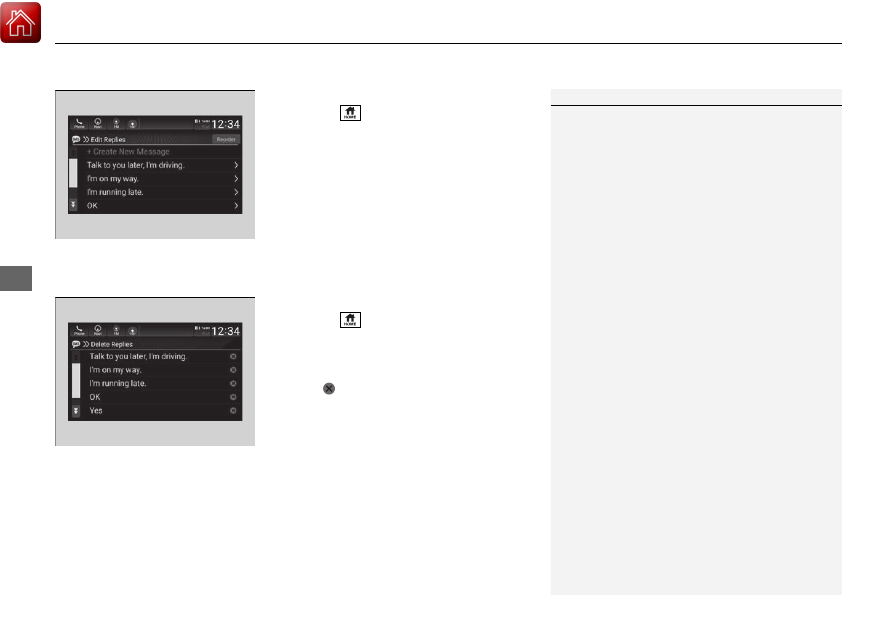Honda Accord (2019 year). Manual - part 29

uu
Bluetooth® HandsFreeLink®
u
HFL Menus
448
Features
■
To edit a reply message
1. Press the
button.
2. Select Messages.
3. Select Settings.
4. Select Edit Replies.
5. Select the reply message you want to edit
or + Create New Message.
u
The on-screen keyboard screen is
displayed.
6. Enter a reply message, and then select
Save.
■
To delete a reply message
1. Press the
button.
2. Select Messages.
3. Select Settings.
4. Select Delete Replies.
5. Select
on the reply message you want to
delete.
u
The pop-up menu appears on the screen.
6. Select Yes.
1
You can change the order of reply messages by
selecting Reorder.